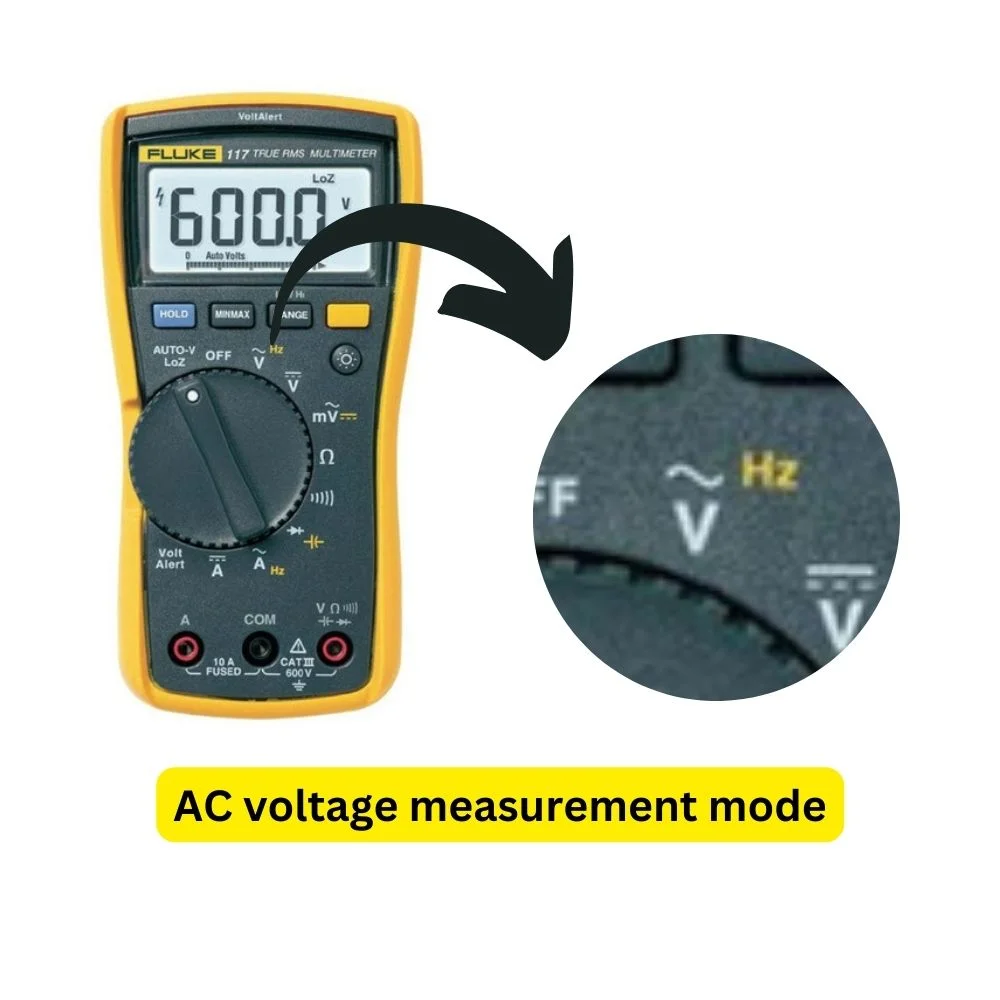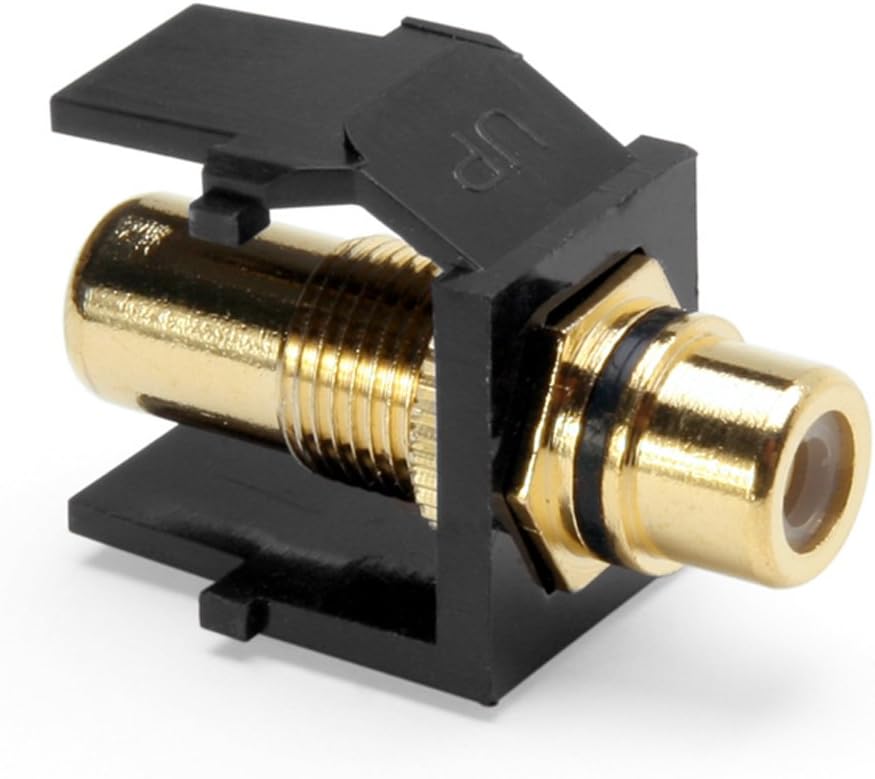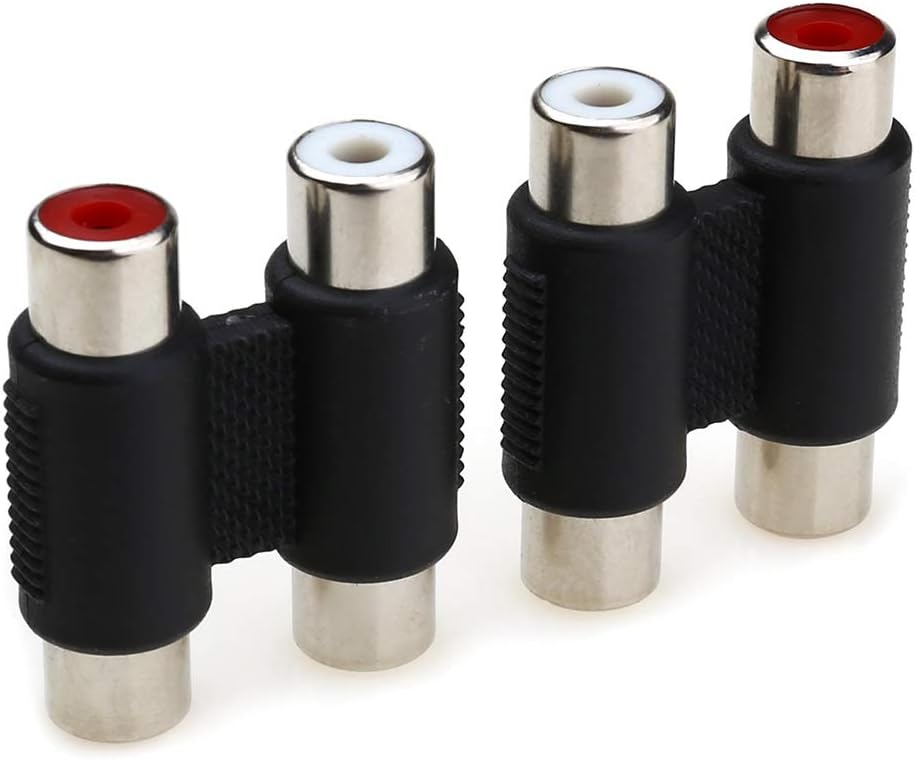Want to know how to test RCA outputs with multimeter? Read this blog!
If you want to know more about how to test blend door actuator with multimeter, read my complete blog.
Set the meter to the AC voltage range to test RCA outputs with a multimeter. Connect the multimeter's red lead to the center pin of the RCA output and the black lead to the outer shield. Play audio through the source and check for a voltage reading on the meter.
What is a Multimeter?
A multimeter is a versatile tool that measures electrical circuits' voltage, current, and resistance. You can test the RCA outputs using a multimeter and determine if they function properly.
Read more about 5 Best Multimeter For Millivolts
I will guide you through the step-by-step process of testing RCA outputs using a multimeter, ensuring you can identify and resolve any potential problems efficiently.
What is RCA Output?
The RCA output, also known as the connector, is an electrical connector commonly used to transmit audio and video signals. However, RCA outputs can sometimes malfunction or produce poor-quality signals like any other electronic component. To troubleshoot and diagnose such issues, a multimeter comes in handy.
Types of RCA Outputs
RCA outputs are used to transmit audio or video signals between devices. The two main types of RCA outputs are:
Analog Audio (Red and White): In general, RCA outputs look like this. They consist of two connectors - one red (right channel) and one white (left channel) - which transmit analog audio signals. These are usually found on devices like DVD players, CD players, audio receivers, and older gaming consoles.
Composite Video (Yellow): The RCA output is used for transmitting analog video signals. There is only one yellow connector carrying the entire video signal. Newer technologies like component or HDMI provide higher quality video than composite video.

Additionally, there are variations and combinations of these RCA outputs:
Component Video (Red, Green, Blue): When compared to composite video, component video separates the video signal into three channels - red, green, and blue. Even though it's not strictly RCA (since it uses three connectors), it's worth mentioning.
Digital Audio (usually Orange or Black): For digital audio signals, some audio devices, like DVD players, may have orange or black RCA outputs. They are either equipped with Sony/Philips Digital Interfaces (S/PDIF) or HDMI Audio Return Channels (ARC).
How to Test RCA Outputs with Multimeter? Learn just in 5 steps
Audio and video devices such as TVs, DVD players, and amplifiers commonly have RCA outputs. These outputs allow you to connect external devices and speakers to enhance your audio and video experience.
Testing RCA outputs using a multimeter is a useful troubleshooting technique to identify any issues with the signal or connections. If you want to know how to test RCA outputs with multimeter, then consider these steps:
Step 1: Gather the necessary equipment
To test RCA outputs, you will need the following equipment:
- Multimeter: Choose a multimeter capable of measuring AC voltage and resistance.
- RCA cables: Obtain a set of RCA cables with male connectors on both ends.
- Alligator clips (optional): These can be helpful for securely connecting the multimeter probes to the RCA cables.
Step 2: Set up the multimeter
Configure the multimeter for the appropriate settings before connecting it to the RCA outputs. Follow these steps:
- Turn on the multimeter.
- Select the AC voltage measurement mode with the dial or selector switch.
- If your multimeter has a range selector, set it to a suitable AC voltage range. Start with a higher range, such as 200V AC, and adjust if necessary.

Read more about Multimeter symbols and what they mean?
Step 3: Connect the multimeter to the RCA outputs
Now it's time to connect the multimeter to the RCA outputs using the RCA cables. Follow these steps:
- Identify the RCA output jacks on the device you're testing. They are usually color-coded, with red indicating the right channel (R) and white or black indicating the left channel (L).
- Plug one end of the main RCA cables into the RCA output jacks of the device. Ensure a secure connection.
- Connect the other end of the main RCA cables to the corresponding input jacks on the multimeter. The red cable should be connected to the positive (+) input, and the white or black cable should be connected to the negative (-) input. If using alligator clips, attach them securely to the RCA cable ends and connect them to the multimeter probes.
Step 4: Test the RCA outputs
Now that everything is set up follow these steps to test the RCA outputs:
- Turn on the device you're testing.
- Activate the RCA output function on the device, such as playing a sound or video.
- Carefully hold the multimeter probes by the insulated handles and touch the positive probe to the center pin of the RCA cable connected to the red output jack.
- Touch the negative probe to the outer metal collar or shield of the RCA cable connected to the white or black output jack.
- Observe the multimeter display. It should show the AC voltage being produced by the RCA output. Ensure that the voltage matches the expected range for the device. For audio signals, it is typically around 0.5V to 2V.
Step 5: Test the resistance of the RCA outputs
In addition to voltage testing, you can also measure the resistance of the RCA outputs. This can help identify issues such as loose connections or damaged cables. Follow these steps:
- Disconnect the RCA cables from the multimeter.
- Set the multimeter dial or selector switch to the resistance measurement mode (Ω).
- Touch the multimeter probes to the RCA cable ends. The positive probe should be connected to the center pin, and the negative probe should touch the outer metal collar or shield.
- Note the resistance reading on the multimeter. It should typically show a low resistance value, indicating a good connection.

Now, you know how to test RCA outputs with multimeter.
Tips to Get the Best RCA Outputs with Multimeter
When testing RCA outputs with a multimeter, it's essential to ensure accurate measurements to obtain reliable results. This guide provides valuable tips to help you get the best RCA output readings with a multimeter, ensuring optimal performance and troubleshooting accuracy.
1. Choose a High-Quality Multimeter
Investing in a high-quality multimeter is crucial for obtaining accurate readings. Look for a multimeter with good resolution and accuracy for AC voltage measurements.
Read more about 7 Best Multimeter for Appliance Repair
Additionally, consider features such as auto-ranging, backlit display, and robust build quality for ease of use and durability.
2. Check the Multimeter's AC Voltage Range
Before testing RCA outputs, familiarize yourself with the AC voltage range of your multimeter. Ensure that the selected range suits the expected voltage levels of the RCA outputs.
Starting with a higher range and adjusting if necessary can prevent overloading the multimeter and obtaining inaccurate readings.
3. Use Proper Probing Techniques
Proper probing techniques help ensure accurate measurements and prevent damage to the RCA outputs or multimeter. Follow these tips when using the multimeter probes:
1. Hold the probes by the insulated handles to avoid touching the metal parts.
2. Insert the probes firmly but gently into the RCA output jacks to establish a secure connection.
3. Ensure the probes directly contact the appropriate pins or collars for accurate readings.
4. Avoid touching the metal parts of the probes together during testing to prevent short circuits.
4. Ensure Secure Connections
To obtain reliable readings, it's essential to have secure connections between the RCA outputs and the multimeter. Loose or unstable connections can result in fluctuating readings or intermittent signals. Follow these steps to ensure secure connections:
1.Test the device by plugging the RCA cables firmly into the RCA output jacks.
2. Double-check that the RCA cables are tightly connected to the input jacks of the multimeter.
3. If using alligator clips, ensure they are securely attached to the RCA cable ends and firmly connected to the multimeter probes.
5. Verify Proper Signal Source
Before testing the RCA outputs, verify that the device is providing a signal through the RCA outputs. Playing audio or video content requires the device to be powered on and in the appropriate output mode.This step helps ensure that the RCA outputs are active and produce a signal for testing.
6. Account for Signal Loss and Impedance Mismatch
When measuring RCA outputs with a multimeter, it's essential to understand that there may be some signal loss or impedance mismatch due to cable length, quality, and connected devices.
Consider these factors when comparing the measured voltage levels with the expected range. If necessary, consult the device's specifications or user manual for the expected voltage levels at the RCA outputs.
7. Test Multiple Channels and Outputs
If your device has multiple RCA outputs or channels, testing each separately is beneficial. This step helps identify any specific issues with a particular channel or output. Follow the same testing process for each RCA output, ensuring accurate measurements and troubleshooting of the entire audio or video system.
8. Compare Readings with Specifications
Refer to the device's specifications or user manual to determine if the measured RCA outputs are within the expected range. Manufacturers often provide information on the voltage levels that should be present at the RCA outputs.
Comparing your measurements with these specifications can help identify any deviations or abnormalities.
FAQs About test RCA Outputs
What is the voltage of RCA output?
The voltage of RCA outputs can vary depending on the device and the specific application. In general, RCA outputs typically produce a low-level voltage signal. Audio devices' voltage ranges from around 0.5 volts to 2 volts.
However, it's important to note that the voltage can differ between audio or video devices. It's always recommended to refer to the device's specifications or user manual for accurate information on the voltage levels of RCA outputs.
What is the resistance of the RCA audio cable?
The resistance of RCA audio cables can vary depending on the length of the cable. Generally, RCA audio cables have low resistance. High-quality RCA cables typically have a resistance value ranging from a few tenths of an ohm to a few ohms per meter.
However, it's important to note that resistance alone doesn't indicate the cable's overall quality or performance. Other factors such as shielding, capacitance, and impedance matching also play a significant role in the cable's performance.
Is RCA output voltage AC or DC?
RCA outputs typically carry an AC (alternating current) voltage signal. AC voltage alternates in polarity and direction over time. The signal produced by RCA outputs represents audio or video information and is usually an AC signal.
Using a multimeter to measure AC voltage when testing RCA outputs is important. The multimeter's AC voltage measurement mode allows for accurate measurement of the alternating voltage levels present at the RCA outputs.
Conclusion
Testing RCA outputs with a multimeter is a straightforward process that can help you identify any issues and ensure optimal audio and video performance. Following these steps, you can diagnose problems with RCA outputs and take appropriate measures to rectify them.
Remember to use high-quality cables, maintain clean connectors, and seek professional assistance when necessary. With the knowledge gained from testing RCA outputs, you can enjoy high-quality audio and video experiences without interruptions. I hope so; now you know how to test RCA outputs with multimeter.







